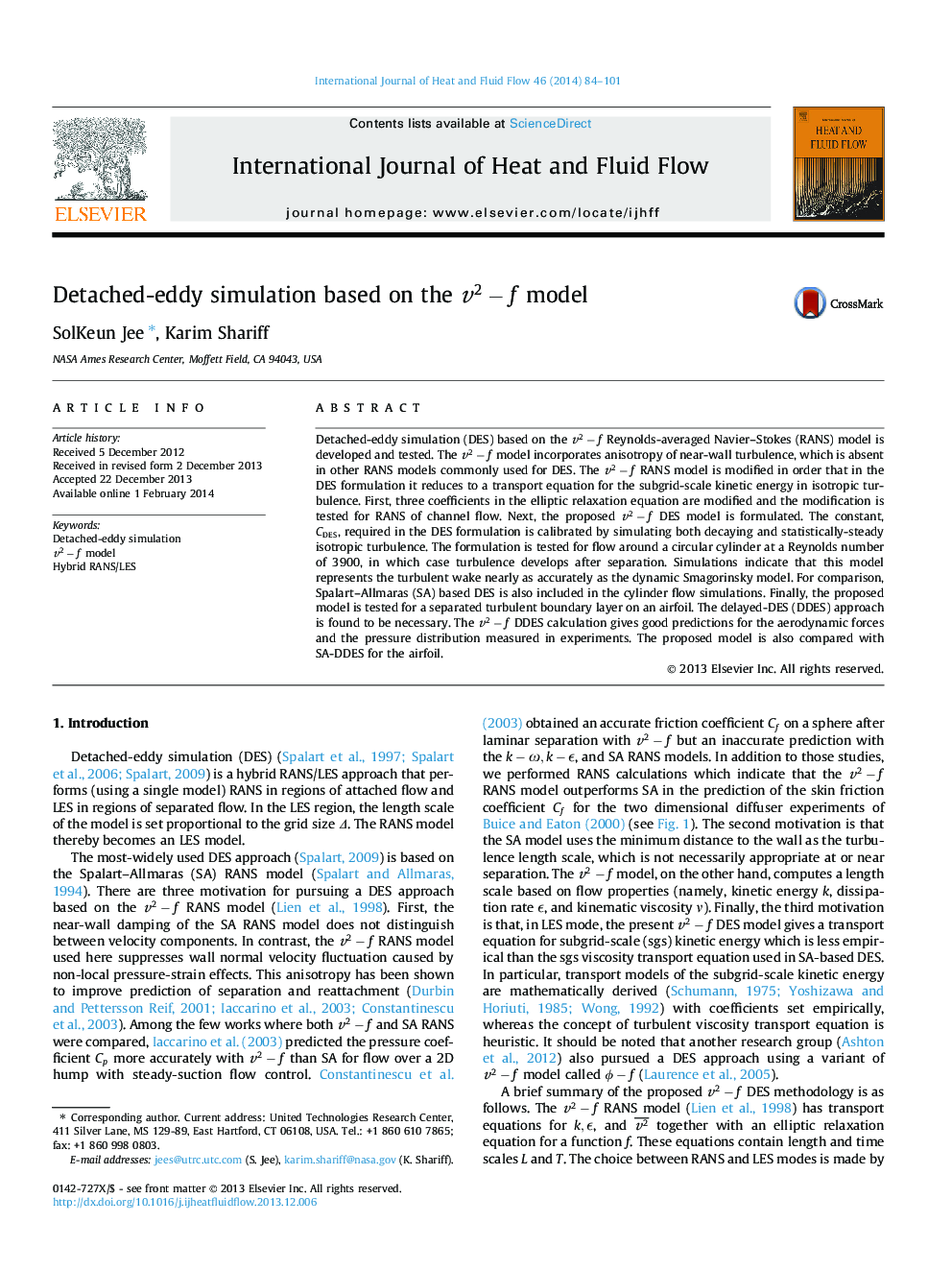| Article ID | Journal | Published Year | Pages | File Type |
|---|---|---|---|---|
| 655496 | International Journal of Heat and Fluid Flow | 2014 | 18 Pages |
•Detached-eddy simulation (DES) based on the v2-fv2-f Reynolds-averaged Navier–Stokes model is developed.•The proposed DES formulation reduces to a transport equation for the subgrid-scale kinetic energy in isotropic turbulence.•Forced isotropic turbulence is an alternative to decaying turbulence to determine the value of the DES coefficient.•The proposed model represents subcritical-Re flow past a circular cylinder as accurately as the dynamic Smagorinsky model.•The proposed model is also validated for a turbulent boundary layer separation on an airfoil for high Reynolds number.
Detached-eddy simulation (DES) based on the v2-fv2-f Reynolds-averaged Navier–Stokes (RANS) model is developed and tested. The v2-fv2-f model incorporates anisotropy of near-wall turbulence, which is absent in other RANS models commonly used for DES. The v2-fv2-f RANS model is modified in order that in the DES formulation it reduces to a transport equation for the subgrid-scale kinetic energy in isotropic turbulence. First, three coefficients in the elliptic relaxation equation are modified and the modification is tested for RANS of channel flow. Next, the proposed v2-fv2-f DES model is formulated. The constant, CDESCDES, required in the DES formulation is calibrated by simulating both decaying and statistically-steady isotropic turbulence. The formulation is tested for flow around a circular cylinder at a Reynolds number of 3900, in which case turbulence develops after separation. Simulations indicate that this model represents the turbulent wake nearly as accurately as the dynamic Smagorinsky model. For comparison, Spalart–Allmaras (SA) based DES is also included in the cylinder flow simulations. Finally, the proposed model is tested for a separated turbulent boundary layer on an airfoil. The delayed-DES (DDES) approach is found to be necessary. The v2-fv2-f DDES calculation gives good predictions for the aerodynamic forces and the pressure distribution measured in experiments. The proposed model is also compared with SA-DDES for the airfoil.
